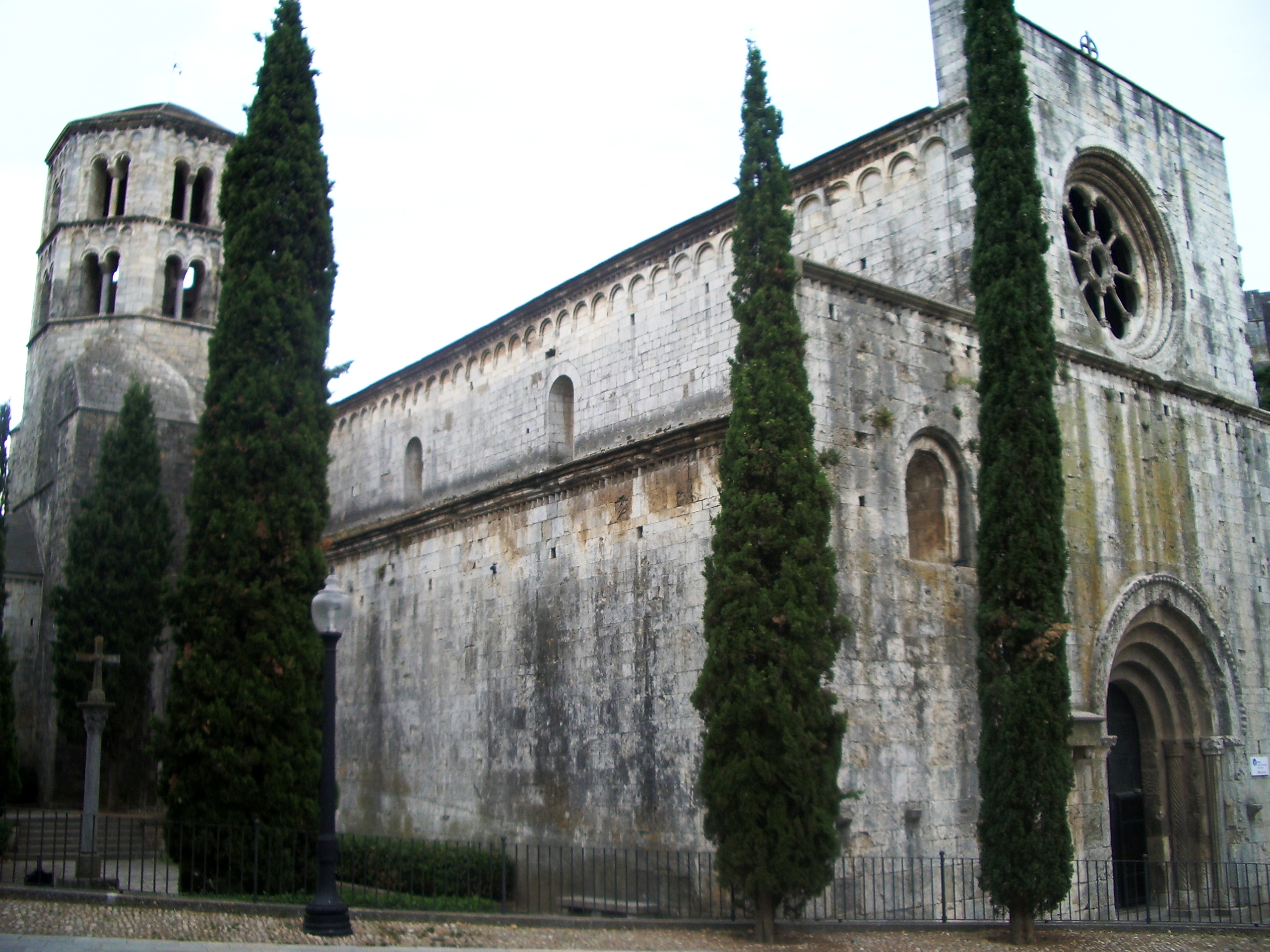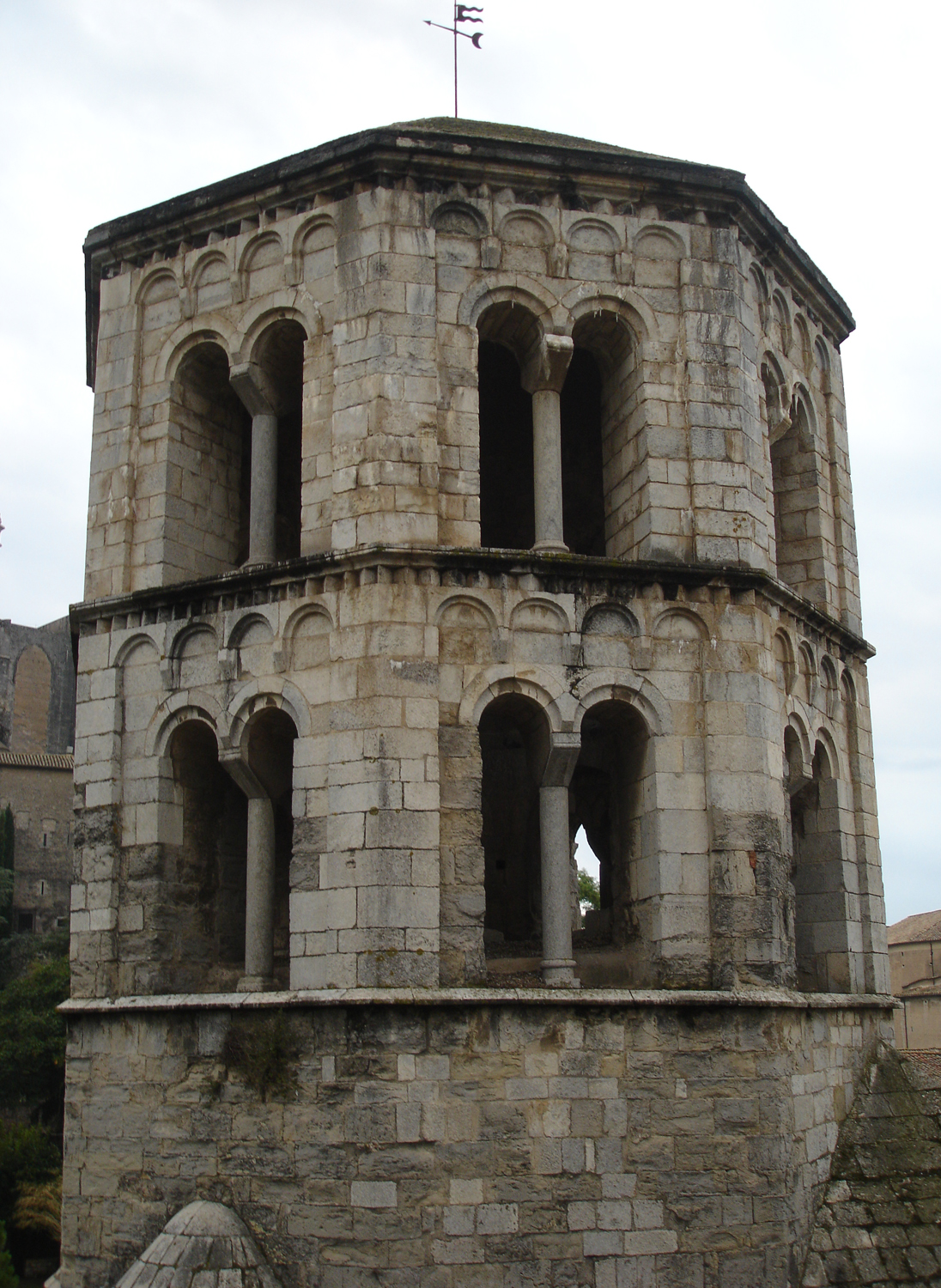Monastery Of Sant Pere De Galligants on:
[Wikipedia]
[Google]
[Amazon]

 Sant Pere de Galligants is
Sant Pere de Galligants is

Short description and photos of the monastery
{{coord, 41, 59, 20, N, 2, 49, 35, E, region:ES-CT_type:landmark_source:kolossus-cawiki, display=title Pere de Galligants Romanesque architecture in Catalonia Archaeological museums in Catalonia Buildings and structures in Girona Museums in Girona Christian monasteries established in the 10th century 12th-century Roman Catholic church buildings in Spain Buildings and structures completed in 1130 Churches completed in the 1130s

 Sant Pere de Galligants is
Sant Pere de Galligants is Benedictine
The Benedictines, officially the Order of Saint Benedict (, abbreviated as O.S.B. or OSB), are a mainly contemplative monastic order of the Catholic Church for men and for women who follow the Rule of Saint Benedict. Initiated in 529, th ...
abbey in Girona
Girona (; ) is the capital city of the Province of Girona in the autonomous community of Catalonia, Spain, at the confluence of the Ter, Onyar, Galligants, and Güell rivers. The city had an official population of 106,476 in 2024, but the p ...
, Catalonia
Catalonia is an autonomous community of Spain, designated as a ''nationalities and regions of Spain, nationality'' by its Statute of Autonomy of Catalonia of 2006, Statute of Autonomy. Most of its territory (except the Val d'Aran) is situate ...
. Since 1857, it is home to the Archaeology Museum of Catalonia
The Archaeology Museum of Catalonia (, MAC) is an archaeological museum with five venues that exposes the most important archaeological collection of Catalonia, focusing on prehistoric times and ancient history. The museum was originally founded i ...
venue in the city. The name translates to English as "Saint Peter of Galligants", where Galligants refers to the River Galligants that runs past the abby.
History
The monastery was built in 992 outside the walls of Girona, whenRamon Borrell
Ramon Borrell (, ; 972–1017) was count of Barcelona, Girona and Ausona from 992. He was the son of Borrell II of Barcelona and Letgarda of Rouergue, and was associated with his father in ruling the counties from 988.
Biography
Between 1000 and 1 ...
, the count of Barcelona
The count of Barcelona (, , , ) was the ruler of the County of Barcelona and also, by extension and according with the Usages of Barcelona, Usages and Catalan constitutions, of the Principality of Catalonia as Prince#Prince as generic for ruler, p ...
, gave the monks rights over the quarter of Sant Pere. The monks ruled the quarter until 1339, when King Peter IV of Aragon
Peter IV (Catalan: ''Pere IV d'Aragó;'' Aragonese; ''Pero IV d'Aragón;'' 5 September 1319 – 6 January 1387), called the Ceremonious (Catalan: ''El Cerimoniós''; Aragonese: ''el Ceremonioso''), was from 1336 until his death the king of ...
restored it to the Kingdom of Aragon
The Kingdom of Aragon (; ; ; ) was a medieval and early modern Monarchy, kingdom on the Iberian Peninsula, corresponding to the modern-day Autonomous communities of Spain, autonomous community of Aragon, in Spain. It became a part of the larger ...
.
In 1117, Ramon Berenguer III, Count of Barcelona
Ramon Berenguer III ''the Great'' (11 November 1082 – 23 January or 19 July 1131) was the count of Barcelona, Girona, and Ausona from 1086 (jointly with Berenguer Ramon II and solely from 1097), Besalú from 1111, Cerdanya from 1117, and cou ...
united the monastery to Lagrasse Abbey
The Abbey of St. Mary of Lagrasse (French: ''Abbaye Sainte-Marie de Lagrasse'' or ''Abbaye Sainte-Marie-d'Orbieu'') is a Romanesque abbey in Lagrasse, southern France, whose origins date to the 7th century. It is located in Languedoc, near the Co ...
in Northern Catalonia
Northern Catalonia, North Catalonia or French Catalonia is the Catalan language, Catalan-speaking and cultural territory ceded to France by Spain through the signing of the Treaty of the Pyrenees in 1659 in exchange for France's effective renu ...
(now part of France
France, officially the French Republic, is a country located primarily in Western Europe. Overseas France, Its overseas regions and territories include French Guiana in South America, Saint Pierre and Miquelon in the Atlantic Ocean#North Atlan ...
). However, Sant Pere kept his own abbey
An abbey is a type of monastery used by members of a religious order under the governance of an abbot or abbess. Abbeys provide a complex of buildings and land for religious activities, work, and housing of Christians, Christian monks and nun ...
and a significant degree of autonomy.
Sant Pere was never a big community, and the church was not the local parish church
A parish church (or parochial church) in Christianity is the Church (building), church which acts as the religious centre of a parish. In many parts of the world, especially in rural areas, the parish church may play a significant role in com ...
; only baptism
Baptism (from ) is a Christians, Christian sacrament of initiation almost invariably with the use of water. It may be performed by aspersion, sprinkling or affusion, pouring water on the head, or by immersion baptism, immersing in water eit ...
s were held there. In 1362, when the monastery was enclosed within the city's walls, it was redesigned into a more defensive shape. It started to decay in the 15th century, and in 1592 it was united to the also decaying monasteries of Sant Miquel de Cruïlles
Sant may refer to:
People
* Alfred Sant (born 1948), Maltese politician
* Andrew Sant (born 1950), English-born Australian poet
* David Sant (born 1968), Catalan director, actor and writer
* Indira Sant (1914–2000), Indian poet
* James Sant ...
and Sant Miquel de Fluvià. In 1835, the monastery included an abbot and four monks. It was declared a national monument in 1931.
The small cloister is an example of Catalan Romanesque architecture
Romanesque architecture is an architectural style of medieval Europe that was predominant in the 11th and 12th centuries. The style eventually developed into the Gothic style with the shape of the arches providing a simple distinction: the Ro ...
. The northern gallery dates to 1154, while the remaining are from 1190. The capitals of the columns have motifs very similar to those in the cloisters of Sant Cugat del Vallès
Sant Cugat del Vallès () is a town and municipality north of Barcelona, Catalonia. Known as ''Castrum Octavianum'' in antiquity (which means ''the castle of Octavianus'') and as ''Pins del Vallès'' during the Second Spanish Republic, it is nam ...
or the Girona Cathedral
The Cathedral of Saint Mary, (Catalan language, Catalan: ''Catedral de Santa Maria''), is a Catholic Church, Roman Catholic cathedral located in Girona, Catalonia, Spain. It is the seat of the Roman Catholic Diocese of Girona.
The cathedral's in ...
. Some depict scenes from the life of Jesus
The life of Jesus is primarily outlined in the four canonical gospels, which includes his Genealogy of Jesus, genealogy and Nativity of Jesus, nativity, Ministry of Jesus, public ministry, Passion of Jesus, passion, prophecy, Resurrection of J ...
, while others show typical Romanesque elements such as lions or medieval-style sirens.

Overview
The Romanesque church was built in 1130, and has a nave and two aisles with a transept, and four apses. The portal, in a rather archaic style, comes probably from a previous building. It is surmounted by arose window
Rose window is often used as a generic term applied to a circular window, but is especially used for those found in Gothic cathedrals and churches. The windows are divided into segments by stone mullions and tracery. The term ''rose window'' wa ...
with a diameter of 3.5 meters.
The interior features a series of side columns, with capitals having vegetable motifs, used to reinforce the central vault. The capitals of the apse columns are more elaborated, and were probably executed by different artists. Some of them have been attributed to the Master of Cabestany.
The bell tower has an octagonal plan and two sectors, the upper one, of two floors featuring with double arches divided by columns, decorated with Lombard band
A Lombard band is a decorative blind arcade, usually located on the exterior of building. It was frequently used during the Romanesque and Gothic periods of Western architecture. It resembles a frieze of arches.
Lombard bands are believed to ...
s.
See also
*Monastery of Sant Daniel, Girona
The Monastery of San Daniel (Catalan: ''Monestir de Sant Daniel'') is a religious complex in Girona, Catalonia, northern Spain.
It was founded in the early 11th century by will of countess Ermesinde of Carcassonne, who wanted to found a nunnery ...
Sources
*External links
Short description and photos of the monastery
{{coord, 41, 59, 20, N, 2, 49, 35, E, region:ES-CT_type:landmark_source:kolossus-cawiki, display=title Pere de Galligants Romanesque architecture in Catalonia Archaeological museums in Catalonia Buildings and structures in Girona Museums in Girona Christian monasteries established in the 10th century 12th-century Roman Catholic church buildings in Spain Buildings and structures completed in 1130 Churches completed in the 1130s